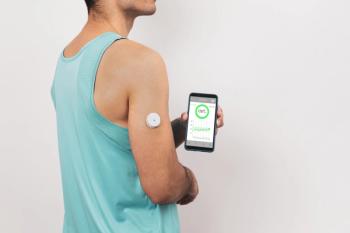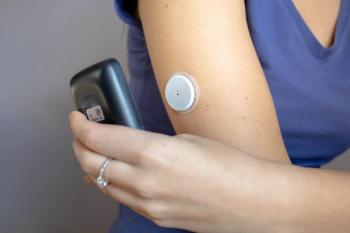
Initiation of Continuous Glucose Monitoring Reduced Hospitalizations for Diabetes, CKD
According to 2 conference abstracts, CGM’s are effective in treating T2D and chronic kidney disease, but more data may be required to complete the picture.
Continuous glucose monitoring (CGM) has proven to be effective in assisting people with diabetes maintain safe glycemic levels throughout the day, and now a pair of abstracts presented at the Advanced Technologies and Treatments for Diabetes meeting, held February 22 to 25, 2023, aim to paint a fuller picture about the impact of CGMs on specific demographics: the first1 looked at adults with type 2 diabetes (T2D) and chronic kidney disease (CKD), and the second studied hospitalized pediatric patients.2
The first study,1 which “evaluated change in hospitalizations for severe hypoglycemia and hyperglycemia before and after CGM initiation in patients with [T2D] and moderate to severe CKD,” evaluated 10,122 CGM users with an average age of 67.3 years. Results showed a clear correlation between patients starting CGM and a decreased chance of them requiring hospital care. The proportion of patients hospitalized for at least 1 severe hypoglycemic event was 13.2% after starting CGM (vs 14.9% prior to CGM use), and hypoglycemia-related hospitalizations decreased from 27.6% to 24%.
Overall, serious glycemic events that resulted in hospitalization were lowered thanks to CGM.
A second study2 focused on the accuracy of the Dexcom G6 in the pediatric inpatient setting. Although CGMs are common for people with T1D, data are lacking regarding pediatric impatient care and the effect of CGMs on younger patients.
For this study, 32 patients with a median age of 14.5 years, all of whom had inpatient visits, were evaluated. Mean absolute relative difference was 12.5%, while the medical floor mean absolute relative difference was 11.6% (n= 373) and the ICU mean absolute relative difference was 15.5% (n = 124).
Researchers concluded that “CGM accuracy was comparable to previously published T1D adult inpatient data, with higher accuracy in non‐critical hospital settings.” While the data looked positive for CGM use in pediatric inpatient settings, investigators also noted that data should be collected. “Future prospective studies and inpatient protocols are necessary to ensure safe and feasible sensor use in the pediatric hospital setting,” they concluded.
Glycemic control is paramount in maintaining a healthy lifestyle for people with T1D and T2D. Exercise and a healthy diet are key to keeping glycemic levels steady, and there is mounting evidence that CGMs reduce the risk of losing control of blood sugar levels at any given time.
A survey of people with T2D, conducted last year by One Drop,3 surmised that “90% of respondents were familiar with CGM technology, and most were open to adoption,” although “83% had never tried CGM.” So although CGMs are well-known, their use still needs to be implemented on a more widespread scale.
References
1. Hannah K, Nemlekar P, Johnson M, et al. Changes in hospitalizations for severe hypoglycemia and hyperglycemia and continuous glucose monitor (CGM) use in type 2 diabetes and chronic kidney disease (CGM) patients. Presented at: Advanced Technologies and Treatments for Diabetes 2023; February 22-25, 2023; Berlin, Germany.
2. Corby E, Pyle L, Towers L, et al. Accuracy of the Dexcom G6 continuous glucose monitor in hospitalized pediatric patients with type 1 diabetes. Presented at: Advanced Technologies and Treatments for Diabetes 2023; February 22-25, 2023; Berlin, Germany.
3. One Drop study signals significant growing interest in continuous glucose monitors (CGMs) among people with type 2 diabetes (T2D). News release. One Drop. June 4, 2022. Accessed March 20, 2023. https://www.prnewswire.com/news-releases/one-drop-study-signals-significant-growing-interest-in-continuous-glucose-monitors-cgms-among-people-with-type-2-diabetes-t2d-301561358.html
Newsletter
Pharmacy practice is always changing. Stay ahead of the curve with the Drug Topics newsletter and get the latest drug information, industry trends, and patient care tips.
























































































































